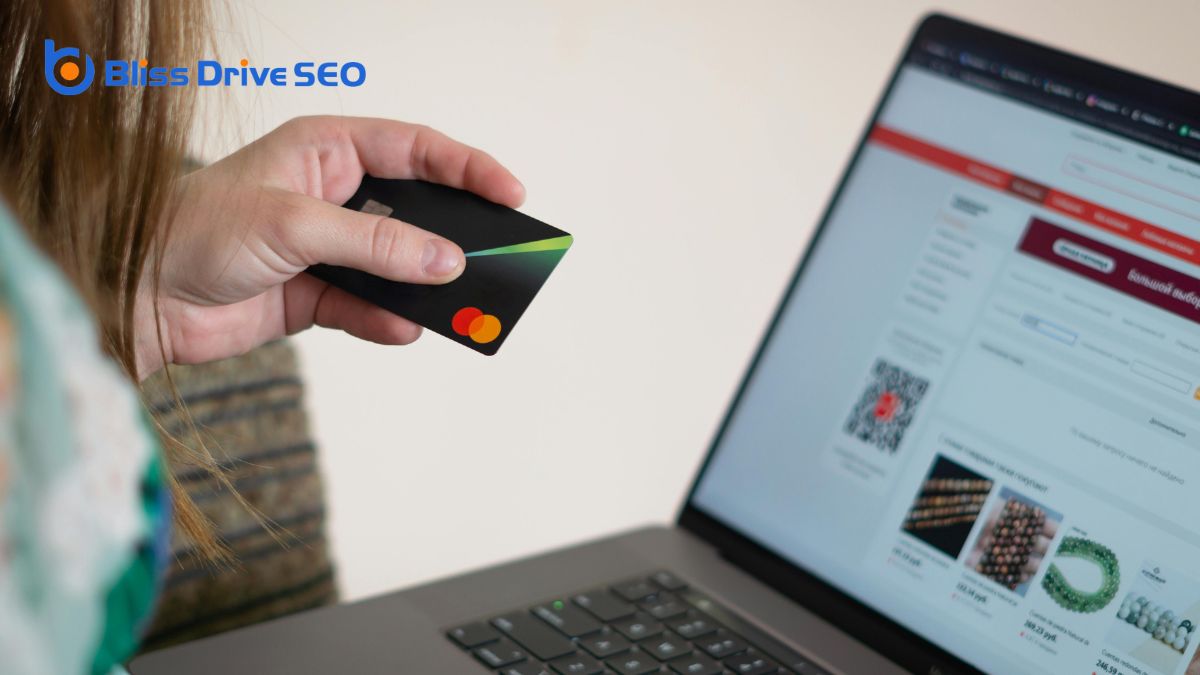Learn More About Us

To maximize your ecommerce product pages for mobile and enhance SEO, use responsive designA web design approach that makes web pages render well on a variety of devices and window or screen ... for smooth adjustment across devices. Guarantee quick loading speeds by compressing images and reducing HTTP requests. Streamline navigation with collapsible menus and sticky bars, and always use high-quality, condensed images in appropriate formats. Position clear call-to-action buttons above the fold with vivid text and contrasting colors. Create concise, keyword-rich URLs and distinct, captivating titles and meta descriptions. Following these tips will enhance user experience and conversions, setting you on the path to higher search engine rankingsThe position at which a website appears in the SERP.. To fully realize the potential, continue exploring these strategies further.
Responsive design is vital for modern eCommerce product pages, ensuring they adapt seamlessly across various devices like smartphones and tablets. By prioritizing a mobile-friendly design, you'll enhance the user experience, which is essential for retaining visitors and converting them into customers. Since over half of all online shopping happens on mobile devices, having a responsive design isn't just an option—it's a necessity for success.
Implementing responsive design directly impacts your SEO. Google prioritizes websites that offerThe specific product or service being promoted by affiliates. a seamless experience on mobile devices, which can greatly boost your search engine rankings. When your eCommerce product pages are mobile-friendly, you're likely to see an increase in organic traffic. This is because mobile users will find it easier to navigate your site, reducing bounce rates and encouraging longer visits.
Moreover, responsive design contributes to higher conversionThe completion of a desired action by a referred user, such as making a purchase or filling out a fo... rates on mobile devices. When users can easily browse and purchase products without encountering issues, they're more likely to complete a transaction. This seamless experience can make a notable difference in your online shopping outcomes, driving sales and fostering customer loyaltyThe likelihood of customers to continue purchasing from a brand over time..

To keep your mobile ecommerce product pages fast, aim for loading speeds under 3 seconds. Start by optimizing image sizes and minimizing HTTP requests, which can drastically cut down load times.
Use tools like Google's PageSpeed Insights to identify specific areas for improvement and guarantee your pages stay quick and efficient.
When it comes to mobile-friendly ecommerce product pages, optimizing image sizes is essential for guaranteeing fast loading speeds. Large image files can significantly slow down your mobile page loading times, negatively impacting user experience and SEO rankings. By focusing on image optimization, you enhance not only your site's performance but also provide a seamless mobile shopping experience that can leadA potential customer referred by an affiliate who has shown interest in the product or service but h... to higher conversions.
To help you effectively optimize image sizes, consider these steps:
Optimizing image sizes is a crucial step in achieving fast loading speeds, better SEO rankings, and a seamless shopping experience on your mobile-friendly ecommerce product pages.
After optimizing image sizes, the next step to [guarantee] fast loading speeds on your mobile-friendly ecommerce product pages is to minimize HTTP requests. Each HTTP request your page makes requires a round trip to the server, which can slow down loading times. Fewer requests mean faster loading speeds, reducing user bounce rates and keeping potential customers engaged.
Research shows that 53% of mobile site visitors abandon pages that take longer than 3 seconds to load. To optimize for speed, you need to focus on reducing these requests. Start by combining your CSS and JavaScript files. This cuts down on the number of files the browser needs to load.
Also, implement image optimization strategies to [ensure] your images are as small as possible without losing quality.
Utilize browser caching to store static files locally on users' devices so they don't have to be downloaded again on subsequent visits. By minimizing HTTP requests, you enhance user experience, boost your SEO rankings, and increase conversion rates on mobile devices.
These steps [ensure] your ecommerce product pages are optimized for speed, making them more efficient and user-friendly.
Browsing mobile-friendly ecommerce product pages should be a breeze for your customers. Enhancing easy navigation on mobile devices can greatly improve the user experience and boost your SEO. Here's how you can achieve it:

High-quality images are essential for boosting conversions on your mobile-friendly ecommerce product pages. Make sure to optimize image size and use descriptive alt textDescriptions added to images to help search engines understand the content of images. to enhance user experience and SEO performance.
Optimizing image size is paramount in creating mobile-friendly ecommerce product pages that captivate users and boost conversion rates. High-quality images are essential, but they can also be a double-edged sword if not properly enhanced. Large image files can severely slow down your mobile page speedThe time it takes for a webpage to load, affecting user experience and conversion rates., negatively impacting your SEO rankings and user satisfaction. To optimize your product pages effectively, you need to focus on reducing image sizes without compromising quality.
Here's how you can do it:
Alt text plays a significant role in making your high-quality images both accessible and SEO-friendly. By adding descriptive alt text to your product images, you guarantee that visually impaired users can comprehend your offerings through screen readers. This enhances accessibility and guarantees that all your potential customers have a seamless shopping experience.
Moreover, search engines rely on alt text to interpret what your images represent, which enhances your SEO efforts. When you include relevant keywords in your alt text, it provides contextual information that can assist your product pages rank higher in search results. This is especially important for mobile-friendly ecommerce sites, where optimizing for search engines can drive more traffic to your product pages.
High-quality images paired with well-crafted alt text can significantly boost user engagementThe level of interaction and involvement users have with social media content. and conversions. When mobile users can easily find and comprehend your products, they're more likely to make a purchase.
When browsing an ecommerce site on your mobile device, you often have only moments to grab a potential customer's attention, making a clear call-to-action (CTA) essential. A clear call to action on mobile-friendly ecommerce product pages can greatly boost your conversion rates, especially since mobile users have a shorter attention span. To maximize effectiveness, place your CTA above the fold, making sure it's immediately visible without scrolling. This positioning can increase conversion rates by 42%.
To further enhance your CTA, use contrasting colors and bold text. This approach can improve click-through rates by 25%, making your CTA stand out and inviting users to take action. Remember, mobile users are 50% more likely to interact with a site that has a clear and compelling CTA, leading to higher sales and revenue.
Here's how you can ensure your CTA is effective:

Crafting mobile-friendly URLs is an art that combines simplicity with functionality, ensuring your ecommerce site ranks well in search engine results. To optimize your product pages, your URLs should be concise and descriptive. This not only enhances user experience but also makes it easier for search engines to crawl and index your pages.
Including relevant keywords in your mobile-friendly URLs is essential. Keywords help boost your search engine rankings and increase your site's visibility to mobile users. Aim for URLs that are brief and clear, avoiding unnecessary parameters or symbols. Such clutter can confuse both users and search engines, reducing your website's compatibility across different devices and browsers.
Optimization of mobile-friendly URLs directly impacts your product pages' performance in mobile searchUsing a mobile device to conduct internet searches.. By driving organic traffic, you can notably improve your overall SEO performance. Remember, clear and keyword-optimized URLs are more likely to be clicked on, shared, and remembered by users, which further enhances your site's visibility.
In essence, well-crafted mobile-friendly URLs are critical for increasing visibility and driving organic traffic to your ecommerce site, ensuring a seamless user experience and improved search engine rankings.
Building on the foundation of mobile-friendly URLs, it's equally important to focus on optimized titles and meta descriptions to enhance your eCommerce site's mobile SEOOptimization techniques to ensure a website performs well on mobile devices.. Optimized titles and meta descriptions on mobile-friendly eCommerce product pages improve search engine visibility and click-through rates, making them essential elements in your overall SEO strategy.
Here are four essential tips to optimize your titles and meta descriptions effectively:
You should optimize product images and descriptions, implement responsive design, and guarantee fast page load times. Use mobile SEO best practices like optimizing meta tagsHTML tags that provide information about a web page to search engines and visitors. and descriptive URLs to boost search visibility and enhance user experience.
Yes, mobile-friendly design directly affects SEO. Google uses mobile-first indexingGoogle’s practice of using the mobile version of a website for indexing and ranking., so if your site isn't optimized for mobile, you'll rank lower. A mobile-friendly site also improves user experience, boosting engagementThe interactions that users have with a brand’s content on social media. and reducing bounce rates.
You should structure your ecommerce site for SEO by organizing categories clearly, using breadcrumb navigationA navigational aid showing the user’s path to the current page., optimizing URL structure with keywords, and implementing internal links. These strategies help search engines understand your site and improve visibility.
You should prioritize optimizing your page speed for mobile SEO. Prioritize your site loads quickly, has easy navigation, and uses responsive design. Implementing Accelerated Mobile Pages (AMP) can also enhance your site's performance and user experience.
By following these seven tips, you'll create mobile-friendly eCommerce product pages that not only enhance user experience but also boost your SEO rankings. Focus on responsive design, fast loading speeds, and easy navigation to keep users engaged. High-quality images and clear call-to-actions will drive conversions. Guarantee mobile-friendly URLs and optimized titles and meta descriptions for better search visibility. Implement these strategies, and you'll see your mobile traffic and sales soar!
